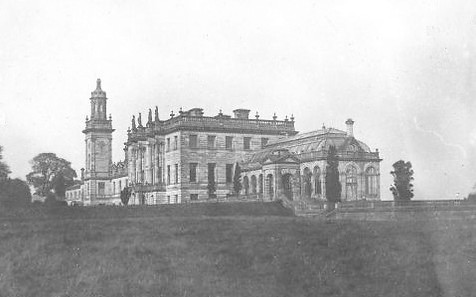History of Rivacre Valley
Rivacre Valley, and the surrounding land, has a rich and fascinating history that can be traced back over 1000 years. Parts of the Reserve once belonged to the estate of a large stately home and racecourse, which went on to play its part in the war efforts of WWI and WWII. The slopes were used for motocross on a national level during the 1950s-70s, and may well have been televised at some points. A large public open-air swimming pool existed on-site up until the 1980s.
Taking Rivacre Valley's expansive history into consideration, it's no wonder that there have been so many reported ghost sightings - particularly in the Church Wood area, close to St Paul's Church!
We're always looking to learn more, so if you have any stories, memories or old photographs that you think might be of interest, please do get in touch via email or feel free to share them on the Rivacre Valley Facebook group.
Rivacre Baths
A very popular destination for families following its grand opening in 1934, Rivacre Baths showcased a large outdoor swimming pool with a diving platform, ornate rose gardens, fountains, a café and a children's play area.
The pool was split into two parts separated by a wall. The shallow section for children and non-swimmers went no deeper than 3ft6in, whereas the main section had depths ranging from 2ft6in right down to 14ft at the diving end. The water was pumped from the Manchester Ship Canal nearly one mile away and filtered before being fed into the pool.
The facilities retained their popularity right up until the 1970s, but began to decline as heated indoor pools started to appear by the 1980s. The swimming pool eventually closed in 1981 and was demolished in 1985, with the former site now making up part of the nature reserve.


Many thanks to Mike Evans for these amazing photographs from his father's collection showing children playing in the fountains and families enjoying a day out at Rivacre Baths (circa 1968/69)
Credit: Raymond Swarbrick on YouTube
Hooton Hall and Hooton Park Racecourse
A large portion of what is now the nature reserve once made up part of the estate of Hooton Hall. The ownership of the surrounding lands can be traced back as far as 1070, but not much is known about the original Hooton Manor, except for that its replacement was built by 1488. This manor stood for 300 years until 1788 when it was replaced with the third and final house, Hooton Hall.
“Hooton Hall was easily one of the finest houses in the north-west, perhaps even in the country” Lost Heritage
After the original owners, the Stanley family, declared bankruptcy in 1849 due to gambling issues, the property was acquired by Richard Christopher Naylor, a banker from Liverpool, who went on to add a vast orangery, a racecourse, a polo field, a heronry, and a clock-tower. Hooton Park Racecourse was opened to the public and hosted a prolonged period of racing from the late 1800s up until 1915. The outbreak of WWI saw Hooton Park become an airfield space for training US and Canadian pilots, whilst Hooton Hall was used as a military hospital and the officer’s mess.
The Hall was wrecked and badly damaged by fire when occupied by American airmen in 1917-18. It was eventually demolished in c.1925 whilst Hooton Park remained an airfield for the Royal Auxiliary Airforce until 1957. The site is now that of the Vauxhall factory and some of the surrounding land was acquired by the Council in the 1980s to make up the local nature reserve that exists today.




